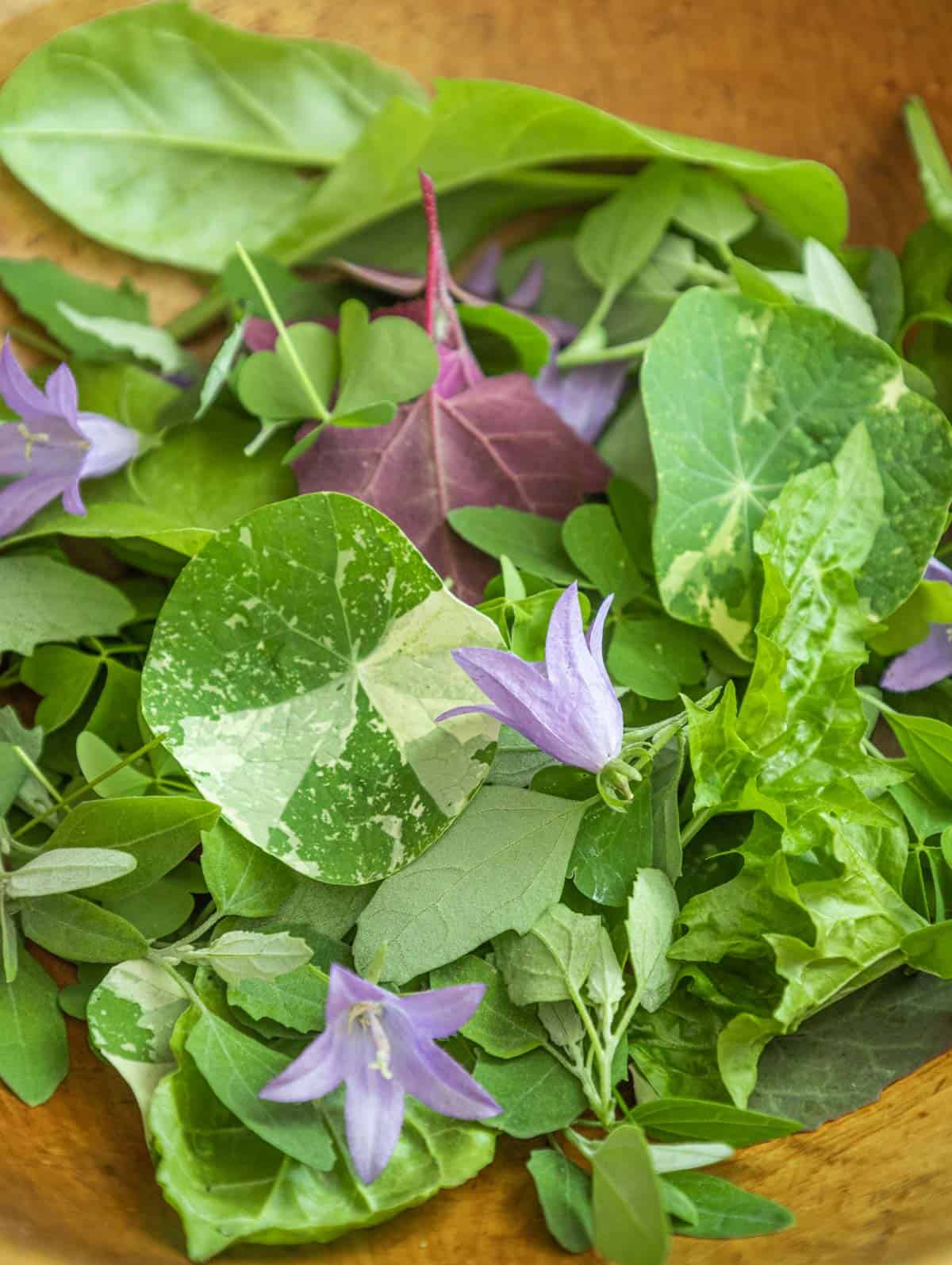An ancient plant sea beet is the wild ancestor of common vegetables like beetroots and Swiss chard. With its spinach-like flavor, it's a great green to grow if you like the taste of chard but find yourself tossing out the stems. In this post I'll briefly cover its history as an edible plant, along with my experience growing and cooking it.

Background and History
Beta maritima was described as Beta vulgaris by Carl Linneus in 1753, and later as Beta maritima by Giovanni Arcangeli in 1882. Humans have a long history with this sea beet, and its use could date back to Mesolithic era. The plant is Native to Europe and the Mediterranean, and also known as sea spinach, wild beet and wild spinach.

Wild sea beet plants grow all over the U.K. and Western Europe. It can be found by salt marshes, but especially coastal, sandy areas near the sea like beaches and sea walls. Since I live in Wisconsin, the pictures in this post are from my garden.
Here's a fun excerpt on them and other edible wild plants from the book Old English Wildflowers:

"The Sea-beet (Beta maritima) is the parent of more than one variety of garden beet and of mangold wurtzel. Its leaves are often eaten as spinach. Along our hedgerows we find the Wild Parsnip (Pastinaca sativa), and the Wild Carrot (Daucus carota) is found indigenous on light sandy soils. There are many plants which in their wild state furnish vegetables. The tops of Nettles are frequently used in spring-time in the country. In many parts of Lancashire they are sold for making nettle beer and for mixing with porridge."
Modern Use
Like many wild edible plants, sea beet greens have mostly been replaced by chard and spinach in modern recipes. But, unlike the others, this wild ancestor wasn't forgotten. According to Beta maritima: The Origin of Beets, the resilience of the plants wild genetics still plays a role in modern beet cultivation.
"The species is resistant against many pathogenes, in particular viruses and fungi, but also to nematodes and insects. Moreover, B. maritima is highly tolerant to drought, heat and, as mentioned above, salanity. Most importantly, sea beets can easily be crossed with sugar beet, thus providing a route for the transfer of genes for desirable agronomic traits into cultivated beet."

Growing Sea Beet
I found sea beet greens easy to grow, even in Wisconsin (Zone 4b) in my cramped, partly shaded garden. Like bladder campion or collejas, sea beet likes sandy areas, but can thrive in rich garden soil if given the chance.

This is a perennial leafy vegetable, so if you don't live in an area where it will die in the Winter it may spread. Sea beet grows best in sunny areas, and, like many greens, regular pruning will encourage new growth.

Seeds
I bought sea beet seeds from Magic Garden Seeds, but there's many options online. Make sure to let a few plants go to seed so you can plant more in the future.
Cooking Sea Beet
The young leaves are mild tasting and tender enough to add to salads raw. As it grows, the dark green leaves become slightly bitter and should be cooked like spinach. The plant also has relatively high level of oxalates which some people can be sensitive to.

Sea beet is a prolific grower. Even after the flowering stage the leaves can be cooked tender without removing the stems, for a time. Mature, fully-formed leaves are excellent steamed and served with butter, salt and a lemon wedge. One of my favorite sea beet recipes is the classic Roman dish with pine nuts, garlic, raisin and hot chili below.

Roman-Style Sea Beet Greens
Equipment
- 1 3 quart pot with steamer insert for steaming (optional)
- 1 10 inch saute pan
Ingredients
- 8 oz sea beet greens washed and cleaned *see note
- Kosher salt to taste
- 1 large cloves garlic thinly sliced
- 2 tablespoons olive oil
- 1.5 tablespoons raisins currants, or golden raisins
- A few cracks of the peppermill
- 1 tablespoons toasted pine nuts
- 1 tiny pinch crushed red pepper flakes
Instructions
- Bring a pot of salted water (1 Tablespoon salt per quart) to a boil. Add the greens to the boiling water and cook until they're tender and taste good to you, a minute or two at most. Remove the greens, drain, cool, and squeeze dry.
- Cook the garlic in the oil on medium heat until golden about 5 minutes. Add the the cooked sea beet greens and remaining ingredients. Stir to mix with the ingredients and coat with oil.
- Taste and correct the seasoning for salt and pepper, and cook down if it looks too wet. Serve hot with lemon wedges if you like.
Notes
Nutrition
Related Posts
Erbazzone (Italian Wild Greens Pie)
Minestrella: Italian Soup of Many Greens
Common Lambsquarters / Wild Spinach
References
Downloadable PDF: Old English Wild Flowers: To be Found by the Wayside, Fields, Hedgerows, Rivers, Moorlands, Meadows and Seashore by Joseph Tom Burgess (1868)


Garrett
Is it perennial in zone 4?
Alan Bergo
PFAF says "It is hardy to UK zone 5 and is not frost tender." If you're in zone 4 in the US, I would assume it will die in the Winter. Even if it doesn't, it seems pretty tame from my experience.
Steve Brill
I haven't tried the recipe yet, but plan on it soon, most likely with a combination of regular beet greens and spinach. It reminds me of a side dish we had in Rome last November, but which they didn't use garlic but some other member of the Allium family. Very good as a side with pan-roasted Turbot. We also had a side of greens probably using one or more members of the Chicories and Endives (not Belgian), and am interested to try your Punterelle recipes from an earlier post. Keep it up with the posts.
Alan Bergo
Thanks Steve.